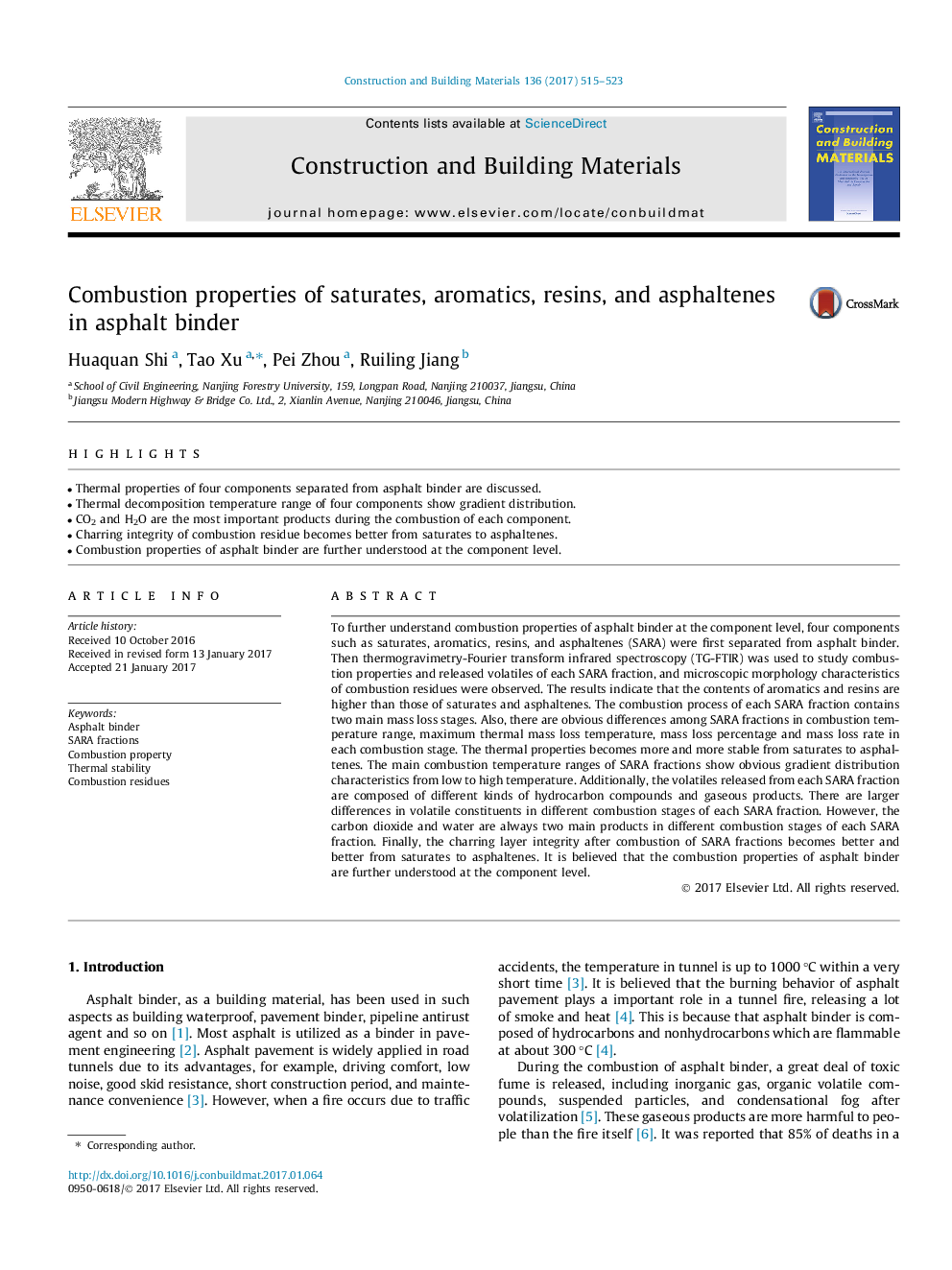| Article ID | Journal | Published Year | Pages | File Type |
|---|---|---|---|---|
| 4918565 | Construction and Building Materials | 2017 | 9 Pages |
Abstract
To further understand combustion properties of asphalt binder at the component level, four components such as saturates, aromatics, resins, and asphaltenes (SARA) were first separated from asphalt binder. Then thermogravimetry-Fourier transform infrared spectroscopy (TG-FTIR) was used to study combustion properties and released volatiles of each SARA fraction, and microscopic morphology characteristics of combustion residues were observed. The results indicate that the contents of aromatics and resins are higher than those of saturates and asphaltenes. The combustion process of each SARA fraction contains two main mass loss stages. Also, there are obvious differences among SARA fractions in combustion temperature range, maximum thermal mass loss temperature, mass loss percentage and mass loss rate in each combustion stage. The thermal properties becomes more and more stable from saturates to asphaltenes. The main combustion temperature ranges of SARA fractions show obvious gradient distribution characteristics from low to high temperature. Additionally, the volatiles released from each SARA fraction are composed of different kinds of hydrocarbon compounds and gaseous products. There are larger differences in volatile constituents in different combustion stages of each SARA fraction. However, the carbon dioxide and water are always two main products in different combustion stages of each SARA fraction. Finally, the charring layer integrity after combustion of SARA fractions becomes better and better from saturates to asphaltenes. It is believed that the combustion properties of asphalt binder are further understood at the component level.
Related Topics
Physical Sciences and Engineering
Engineering
Civil and Structural Engineering
Authors
Huaquan Shi, Tao Xu, Pei Zhou, Ruiling Jiang,
